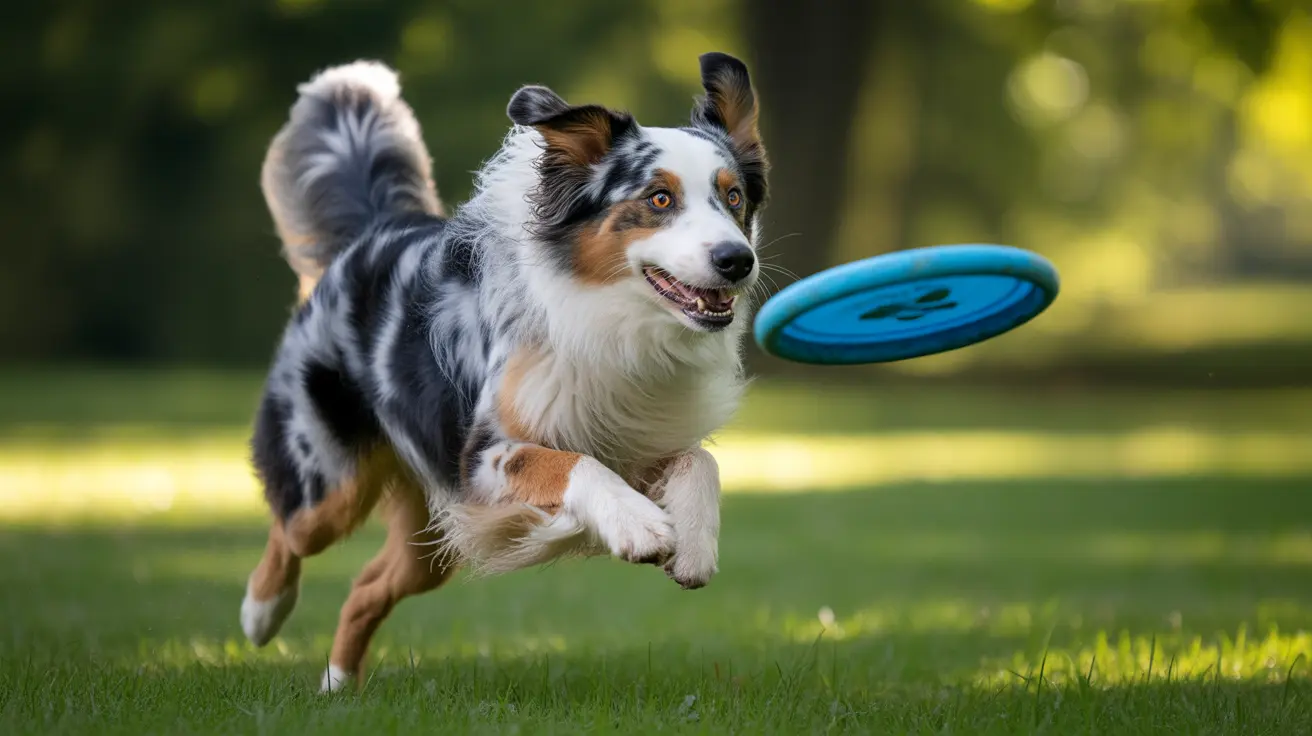Understanding Muscle Soreness in Dogs
Just like humans, dogs can experience muscle soreness and fatigue after physical activity. Whether it's from an intense play session, a longer-than-usual walk, or increased exercise, our canine companions are susceptible to muscle pain and stiffness that may not become apparent until hours or even days after the activity.
Many pet owners are surprised to learn that dogs can get sore muscles, primarily because our four-legged friends are experts at hiding their discomfort. Understanding the signs of muscle soreness and knowing how to prevent and treat it is crucial for maintaining your dog's health and well-being.
Common Signs of Muscle Soreness in Dogs
Physical Indicators
Dogs typically show several physical signs when experiencing muscle soreness:
- Difficulty getting up after resting
- Reluctance to climb stairs or jump
- Stiffness in limbs, especially after lying down
- Subtle changes in gait or movement
- Decreased activity level
- Visible discomfort when touched in certain areas
Behavioral Changes
When dogs are dealing with muscle soreness, they often exhibit behavioral changes such as:
- Unusual reluctance to play or exercise
- Increased irritability when touched
- Changes in sleeping patterns
- Whining or vocal expressions of discomfort
- Excessive licking of specific muscle areas
- Seeking more alone time or quiet spaces
Causes of Muscle Soreness in Dogs
Several factors can contribute to muscle soreness in dogs:
- Overexertion during exercise or play
- Sudden increases in activity level
- "Weekend warrior syndrome" (irregular exercise patterns)
- Participating in new physical activities
- Athletic events or competition
- Age-related factors
- Underlying medical conditions
Treatment and Recovery
When your dog shows signs of muscle soreness, consider these treatment approaches:
- Allow adequate rest periods
- Provide a comfortable, quiet space for recovery
- Apply gentle massage to affected areas (if tolerated)
- Consider cold or warm compresses as appropriate
- Maintain normal walking schedules but reduce intensity
- Ensure proper hydration and nutrition
- Follow veterinary recommendations for pain management
Prevention Strategies
Exercise Management
To prevent muscle soreness, implement these exercise management strategies:
- Gradually increase activity levels
- Maintain consistent exercise routines
- Warm up before intense activity
- Cool down after exercise
- Monitor environmental conditions
- Adjust activity based on age and fitness level
Regular Maintenance
Preventive measures should include:
- Regular veterinary check-ups
- Proper nutrition and hydration
- Appropriate rest between activities
- Weight management
- Age-appropriate exercise plans
Frequently Asked Questions
How can I tell if my dog is experiencing muscle soreness or overexertion after exercise?
Look for signs such as difficulty getting up, reluctance to move, stiffness in movements, and changes in normal behavior patterns. Your dog may also show signs of fatigue, decreased appetite, or unusual vocalization when moving.
What are the common signs of muscle strains and joint pain in dogs caused by too much physical activity?
Common signs include limping, reduced mobility, reluctance to jump or climb stairs, visible discomfort when touched, and changes in activity level. Dogs may also exhibit protective behavior over certain areas of their body.
How should I treat and help my dog recover from muscle soreness or a pulled muscle?
Provide rest, ensure comfortable bedding, and follow veterinary guidance for pain management. Gentle massage and controlled exercise can help during recovery. Maintain proper hydration and nutrition while monitoring improvement.
What precautions can I take to prevent my dog from getting sore or injured during exercise?
Implement gradual exercise increases, maintain consistent activity levels, provide proper warm-up and cool-down periods, and monitor your dog's response to activity. Adjust exercise intensity based on age, fitness level, and weather conditions.
When should I take my dog to the vet for symptoms related to over-exercising or muscle pain?
Seek veterinary care if your dog shows severe or persistent pain, significant changes in mobility, refuses to move, or exhibits symptoms like excessive panting, vomiting, or collapse. Any sudden or dramatic behavior changes warrant professional evaluation.
Conclusion
While muscle soreness in dogs is common, particularly after increased activity, it's essential to monitor your pet's response to exercise and recognize signs of discomfort. By implementing proper prevention strategies and responding appropriately to symptoms, you can help your dog maintain a healthy, active lifestyle while minimizing the risk of muscle soreness and injury.






